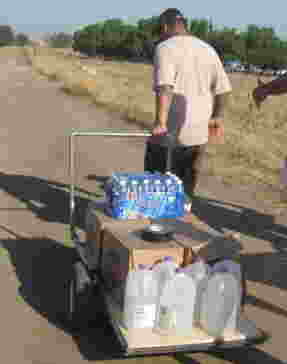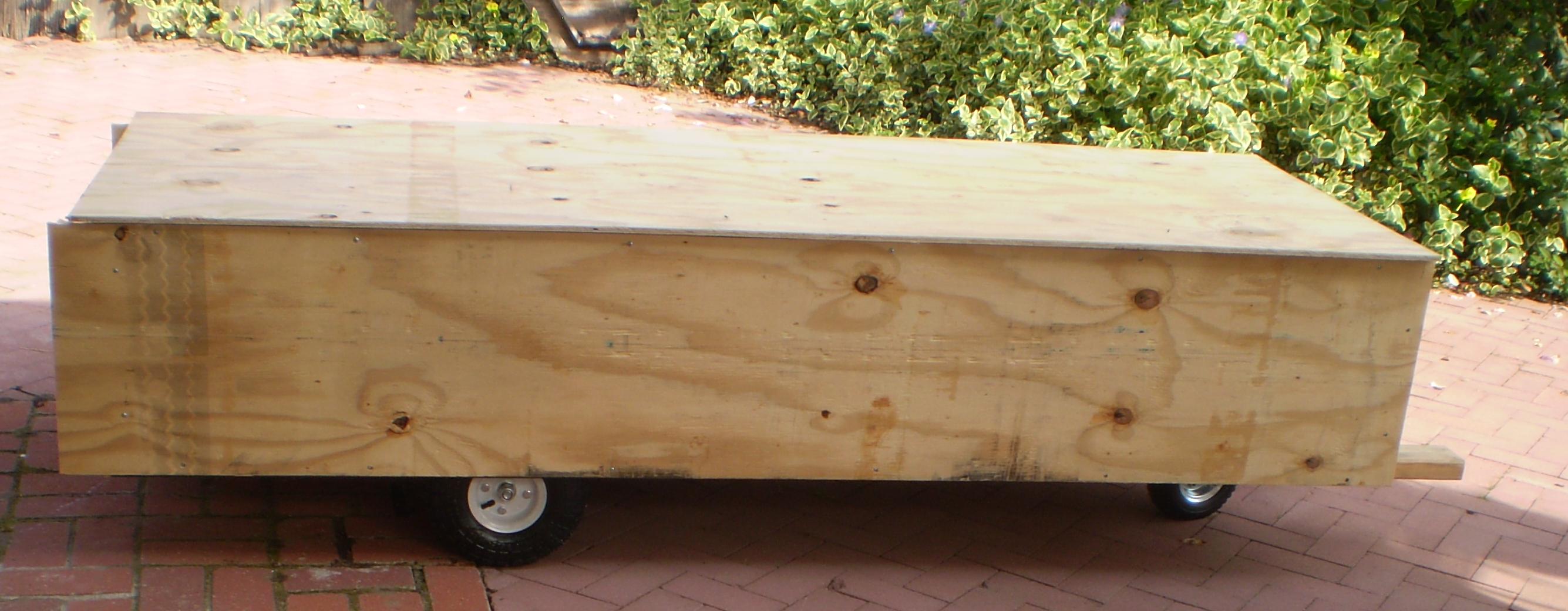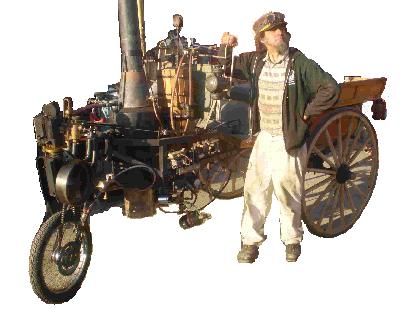Transportation
Minimizing the need
of personal transportation should be a fundamental principle at any
level of local sustainability. If most of the things you need to do
can be achieved by walking, you are free from a major chunk of
expense and hassle of owning a car. If you eliminated the
transportation infrastructures from our cities, they would be about
half the size . When you consider streets, driveways, parking lots,
gas stations, auto repair businesses, parts houses, garages, new and
used car lots, vehicle rentals, etc., and you can easily see how
about half our environment is obliterated by this single catastrophic
category of prosperity. A similar inventory of how much all this
costs you may be equally shocking.
A locally sustainable
village size and layout would eliminate the need for local
transportation. The slower pace of life would softened the urgency of
having to get anywhere instantly, and there would be no need to walk
more than a quarter mile for anything in town or field. The need to
occasionally haul things however, would doubtless remain a necessity.
I have observed homeless making their recycling rounds with some
incredibly clever bicycle-wheeled hand trucks. It would be worthwhile
to consider utility vehicles at this level.

This
photo shows a custom hand cart being used to haul bottled water for a
homeless community. An axle was made by cutting off the heads of
bolts and welding them thread-ends out to a piece of angle iron.
Wheelbarrow wheels were then added to the protruding ends and secured
with locking nuts. Since each of these wheels typically have a load
rating of 300 pounds or more, this axle assembly has a lot of
potential.
Steel pads were then
welded to the assembly to aid in attaching a chassis. This chassis
was a simple frame welded up from electrical conduit. A separate
handle was made from standard plumbing pieces, and made detachable so
the whole thing could be tossed into the trunk of a car if need be.
The chassis in this
case is attached to the pads on the axle by a couple of “C”
clamps that sandwich it between the plywood deck and the pads
provided on the axle assembly.
In this next case,
this same pair of wheels is attached in the same manner to a
three-whee frame. This type of flexibility lends itself to a wide
range of experimentation.
Speaking of
experiments, I needed a bicycle that I could toss under my desk when
I arrived at work, so I came up with the configuration shown here.
This is in the category of the most important things I've ever made:
It's called a mistake. If you aren't making mistakes, it's because
you aren't doing anything at all. The intent was that I would steer
with the handles protruding from the small caster on the rear. The
problem is that nobody has ever been able to ride the thing –
but it's been a lot of fun watching people try. For awhile I had a
$100 bounty for the first person who could ride it. The good news is,
nobody falls far enough to get hurt when they do fall off. Anyone?
A very practical set
of wheels for one with no legal place to sleep would be something I
call a “mobile homeless”. At 7' long by 30” wide
you can sleep off the ground and carry up to about 800lbs within the
20 cubic feet of storage.
More detail
available. At a slightly heavier
level, consider a small automotive trailer if there are no
significant hills to climb.
If concessions must
be made to the cultural bondage of personal motorized transportation,
develop a small vehicle powered by non-petrol fuel for nearby travel
outside the village. A suitable rental or public conveyance would be
required for more distant travel. The balancing economic theory would
be that the savings of having negligible day-to-day transportation
expenses would more than offset the cost of an occasional trip in a
stylish rental vehicle.
This hero of
techno-art has connected a steam engine to a motorcycle wheel to pull
his century-old carriage. I don't recommend doing this as a first
project, because century-old carriages are a tad rare.
When the sustainable
transportation begins to interconnect other sustainable
infrastructures, we begin to rise above our current economic and
ecological disaster. In the public sector transportation links
to points outside the village would be clean, comfortable, and very
economical to residents.
Short-Run Transit
Here's
a concept for local transportation that could move people or freight
at a very low energy cost. The range would be limited to a
quarter-mile or so, but it could move people and products to and from
centralized shopping or industrial areas.
On a small-scale
community, it might provide links between shop/factory, marketing,
agricultural, and residential sections.
The
product is simplicity in itself: a roller-coaster with a mission.
Gravity supplies the energy for acceleration, and for braking at the
end of the run. A small battery and motor would supply any additional
energy needed to finish making it up the hill at the end of a run. A
starter-motor from a dead car would probably be ideal for this
application. The battery would automatically connect and receive any
needed charging between runs. For that matter, an on-board solar
panel might well be adequate.
In
a purely mechanical system, pedals could be installed so that a
passenger could make up this difference.
A
minimum system would consist of a single back-and-forth track, but I
wouldn't recommend having enough cars to create a head-on collision
(more than one).
A
more practical system would involve a loop using two or more
carriers.
The
initial speeds achievable would depend upon the height. The
theoretical speed potentials for various heights are shown below.
Keep in mind that these are also the speeds you yourself would
achieve by the time you hit the ground, if you stepped off the wrong
side of the platform. For you techno-nerds, please notice the
decreasing increase in speed as the platform gets higher. This is
because the speed increases in proportion to the square root of the
increase in height. In other words, to double the speed, you need to
multiply the height by four.
Height
feet/second
mph
2’
11
8
4'
16
11
6’
20
13
8'
23
15
10'
25
17
12’
28
18
14’
30
20
16'
32
22
18’
34
23
20
36
24
It
could be a serious chore to back-pack a couple tons of freight up a
16-foot ladder, so you might consider lowering the run-portion of the
track deep enough into the earth until the platforms themselves are
at ground level.
An overhead “zip”
line would be an alternative to using a track. The advantages would
be less metal and less real estate consumed. Disadvantages would
include the greater technical planning, and probably higher
platforms.
 This
photo shows a custom hand cart being used to haul bottled water for a
homeless community. An axle was made by cutting off the heads of
bolts and welding them thread-ends out to a piece of angle iron.
Wheelbarrow wheels were then added to the protruding ends and secured
with locking nuts. Since each of these wheels typically have a load
rating of 300 pounds or more, this axle assembly has a lot of
potential.
This
photo shows a custom hand cart being used to haul bottled water for a
homeless community. An axle was made by cutting off the heads of
bolts and welding them thread-ends out to a piece of angle iron.
Wheelbarrow wheels were then added to the protruding ends and secured
with locking nuts. Since each of these wheels typically have a load
rating of 300 pounds or more, this axle assembly has a lot of
potential.




